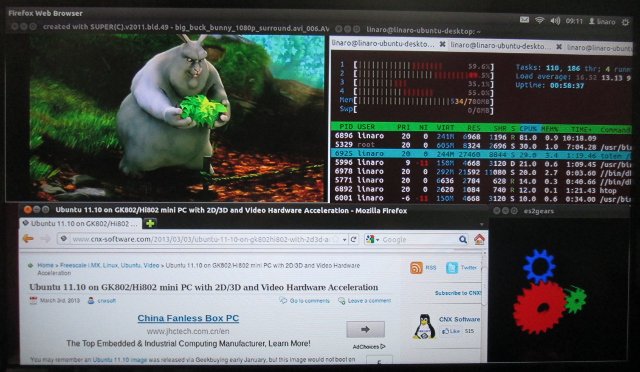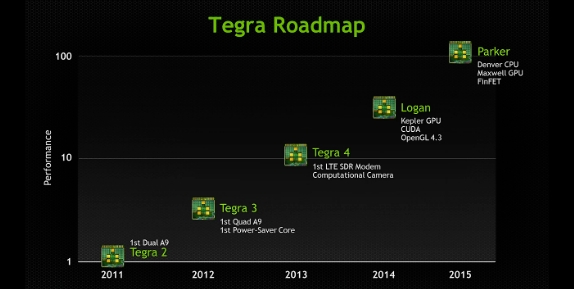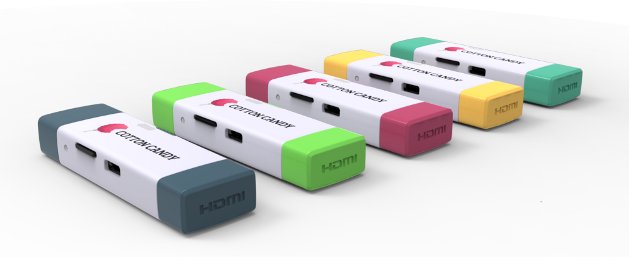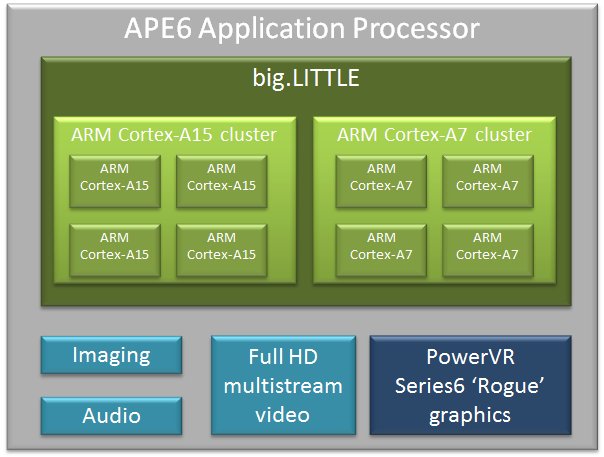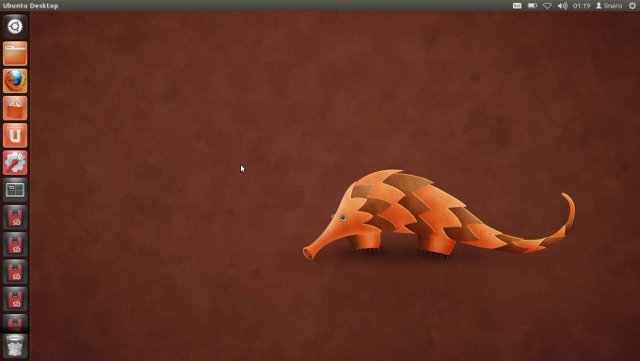One of the main issues with Linux on ARM is the lack of proper GPU drivers for the platform, as most silicon manufacturers now only focus on Android drivers which are not compatible with the Linux kernel, because Android is based on Bionic C library, whereas Linux is based on glibc or its variants. There are two ways to solve this issue: Open Source GPU drivers. This would be the ideal solution, as you would just be able to cross-compile the drivers for the proper, as well as fix bugs without having to ask the silicon manufacturer to fix the driver for you. Bionic to Glibc library. Such library acts like libdl, and allows to load Bionic library and overrides some symbols from bionic with glibc based ones. This is exactly what libhybris does. Ubuntu Touch is capable of using Android GPU drivers to run Ubuntu thanks to this library, […]
Ubuntu 11.10 Image for Hi802 / GK802 is Now Available for Download
About 2 weeks ago, Jasbir released an Ubuntu 11.10 image and installation instructions for GK802 and Hi802 mini PCs based on Freescale i.MX6. I could only find time to give it try yesterday and today. I’ll provide the steps I followed to install the image, and my quick first impressions of the stability and performance of this image. Installation Instructions I mainly followed the instructions provided by Jasbir, and run GParted to increased the partition size on my micro SD card. The image is for a 8 GB micro SD, but those instructions should work on 4GB SD card and greater, as the rootfs partition is only 3GB large. Download the Ubuntu 11.10 image, uboot, as well as the kernel image and modules in a Linux PC:
|
1 2 3 4 |
wget http://dl.miniand.com/jas-hacks/gk802/ubuntu_gk802.img.gz wget http://dl.miniand.com/jas-hacks/gk802/u-boot.imx wget http://dl.miniand.com/jas-hacks/gk802/uImage_3.0.35-0269_cpu_freq wget http://dl.miniand.com/jas-hacks/gk802/modules_3.0.35-02695.tar |
Copy the image, uboot and the kernel to the micro SD card by typing the commands below:
|
1 2 3 4 |
gzip -d ubuntu_gk802.img.gz sudo dd if=ubuntu_gk802.img of=/dev/<sd_device> sudo dd if=u-boot.imx bs=1k seek=1 of=/dev/<sd_device> && sync sudo dd if=uImage_3.0.35-0269_cpu_freq of=/dev/<sd_drive> bs=1048576 seek=1 && sudo sync |
Replace /dev/<sd_device> by your […]
SECO mITX GPU DevKit Features Nvidia Tegra 3, Supports CUDA 5
SECO mITX GPU DEVKIT is a GPU computing development kit that provides a Mini-ITX Qseven 2.0 carrier board (SECO mITX Carrier Board) with a Nvidia Tegra 3 powered Qseven SoM (QuadMo747-X/T30). The carrier board provides a PCI-e x16 connector (PCI Express x4) intended to allow the connection of CUDA 5 enabled desktop graphics boards. Embedded Control Europe reports that the platform will support Nvidia Kayla platform. The main specifications of the platform are as follows: CPU – Nvidia Tegra 3 Quad-Core ARM Cortex A9 GPU – TBD. But you should be able to insert Nvidia graphics card via the PCI-e x16 connector (PCI Express x4) on the mini-ITX board Memory – 2 GB Storage – 4 GB eMMC + 1x SATA 2.0 Connector Network – 1x Gigabit Ethernet USB – 3x USB 2.0 + 1 OTG port Display – HDMI The platform will support Linux Ubuntu , as well as […]
Nvidia Updates its Tegra Roadmap with Parker 64-Bit ARM SoC, Unveils Kayla CUDA Development Platform
Nvidia has given an update about the roadmap for its Tegra processor at the GPU Technology Conference in San Jose, California. Tegra 4 will still be followed by Logan (Tegra 5) as planned with a Kepler GPU and support for CUDA and OpenGL 4.3, but “Stark” has been replaced by “Parker” (Tegra 6) which will be the first 64-Bit Tegra processor based on Denver CPU, Maxwell GPU and make use of Finfet transistors. Logan will be available in 2014, and Parker should be available in 2015 with 100 times more performance than Tegra 2. With this kind of performance, the separation line between desktop and mobile processors will be gone. Nvidia also unveiled Kayla (“Logan’s girlfriend”), a development platform for CUDA and OpenGL based on Tegra 3 quad-core ARM processor and a Kepler GPU connected via a PCI express slot. Jen-Hsun Huang (above) showcased Kayla performance by running real-time ray […]
FXI Technologies Cotton Candy HDMI Stick To Fully Support Both Android and Ubuntu
FXI Technologies was the first company to ever show an HDMI TV dongle when they unveiled the Cotton Candy in November 2011. Since then, many Chinese companies started to provide similar products at lower cost, and the company further improved the Cotton Candy, which is still powered by Exynos 4210 (dual core Cortex A9), by making it even smaller, and getting rid of the internal flash in the process. As a memory refresher, here are the specifications of the Cotton Candy: SoC – Samsung Exynos 4210 dual core Cortex A9 + Mali-400MP4 System Memory – 1GB DRAM Storage – No flash, up to 64GB microSD Video Output – HDMI Connectibity Wifi 802.11b/g/n Bluetooth 2.1 + EDR USB – USB 2.0 male connector for power and connection to devices that supports USB mass storage + microUSB Video Codecs- 480p/720p/1080p Decode of MPEG4-SP/H.263/H.264 AVC/MPEG-2/VC1 Audio Codecs – MP3, AAC, AAC+, Real Audio […]
Ubuntu 11.10 on GK802/Hi802 mini PC with 2D/3D and Video Hardware Acceleration
You may remember an Ubuntu 11.10 image was released via Geekbuying early January, but this image would not boot on my Hi802, lacked 2D/3D acceleration, and to my knowledge there hasn’t been any update since then. So hope of proper Linux support on the device was fading, until the community discovered Freescale released patches for i.mx6 HDMI dongles, developers setup the imx6-dongle community, and after a lot of work, mainly by three members: Jasbir, Dmitriy (rz2k) and James, there’s now GPU and VPU support on Ubuntu 11.10. Here’s a summary of the current status: Wifi working. External SD working Matched IOMUX configuration to align with the Android image. Stripped out unnecessary device initialisation from the original HDMI dongle source. Enabled EGL and GLES HW Acceleration in Ubuntu. Unity desktop might be partially HW accelerated (TBC) Jasbir uploaded a video to YouTube to show the progress, and it looks pretty good. […]
Renesas Unveils APE6 Octo Core big.LITTLE Processor
Samsung Exynos 5 Octa processor is getting some competition with the announcement of Renesas AP6 processor at MWC2013. This SoC comes with the same big.LITTLE configuration (4x Cortex A15, 4x Cortex A7), but with a PowerVR SGX Series 6 ‘Rogue’ GPU, which, I assume, should outperform PowerVR SGX544MP3 GPU used in Samsung SoC. R-Mobile APE6 could be the fastest mobile processor announced to date, and is currently showcased at Imagination Technologies booth at MWC 2013 running several OpenGL ES 3.0 applications, as well as a demonstration of Rightware’s Kanzi Studio, “a PC-based real-time WYSIWYG editor for designers and embedded engineers to create and customize embedded 3D user interface”. There’s very little information about the processor, so that’s basically all I have for now. But before I conclude, I’ll just drop a performance comparison chart between different PowerVR SGX series (source), since it’s the first mobile processor that I know of […]
Ubuntu Linaro 12.11 with 2D/3D Mali-400 GPU Acceleration on ODROID-X Development Board
A few days ago, Hardkernel released the first version of Ubuntu 12.11 (Linaro) with Mali-400 GPU support for their ODROID boards (ODROID-X/X2, ODROID-U/U2). This is still WIP (Work in Progress), but this is one of the few boards together with Pandaboard, Origen and Snowball that can support 2D/3D GPU acceleration in Ubuntu Quantal. Since I have an ODROID-X development board, I decided to give it a try. There are different ways to install it. I chose the way that is most convenient for me (LCD display instead of HDMI), and likely to yield more performance (eMMC instead of SD Card). The current installation instructions to eMMC are extremely cumbersome and you have to go through 5 main steps: Install Android (yes, seriously) in the eMMC Install Ubuntu in the SD Card Install Ubuntu to the eMMC Upgrade Ubuntu to the latest version Install the Mali drivers In this post I’m […]



